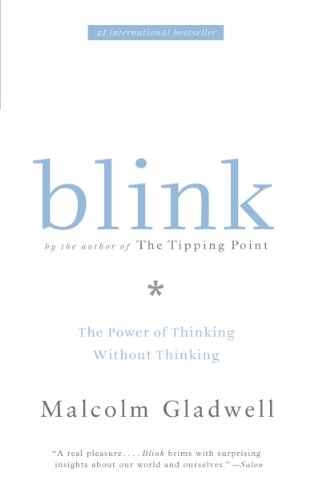Ultimately, life can be boiled down to an endless stream of decisions. Most of the decisions you make on a minute to minute and day to day basis are minor and have little effect on the course of your life.
Other decisions have significant impacts that can alter the trajectory of your life substantially.
Therefore, being an effective decision-maker is one of the most powerful attributes you can have to take control of your destiny and work toward your ideal life.
If you can always find the best path forward, no matter the situation, then the directions you follow in life will lead to rewarding destinations. With that in mind, here are seven proven decision-making techniques that will set you apart in a world full of indecisiveness.
Design a Healthy Decision-Making Environment
Most people do not realize how deeply they are affected by the environment surrounding them, and your environment can have a significant impact on your decisions.
Some environments lend themselves to healthy, positive choices while other, negative environments can lead to poor choices. Ideally, you will want to choose a healthy, inspiring environment to retreat to make critical decisions.
This environment can be any number of locations, so long as it is a positive location that you enjoy and is relatively secluded from distractions.
In many ways, good decision making and creativity go hand in hand. The more creatively inspired you feel, the more apt you are to generate compelling, out of the box solutions that might not have been immediately obvious right out of the gate.
Of course, creativity and inspiration are both deeply affected by your mood, and your mood is deeply affected by your environment. Ensure that effect is a good one by doing your brainstorming in a calm and relaxing environment that lends itself to creative inspiration.

Blink
⏱ 10 minute reading time
🎧 Audio version available
Analyze the Situation
Once you are in a healthy decision-making environment where you can entirely focus on the problem in front of you, it’s time to analyze the situation as logically and thoroughly as possible.
Make a pros and cons list, visualize the impact of your decision’s outcome, and look at the situation from as many angles as possible until you have thoroughly evaluated the situation and the options that are available to you.
In many cases, this can take a little time spent in thought. Problems for which there is no obvious solution often take some effort to understand fully. If you don’t fully understand the problem and all of its various nuances, the potential solutions you create may fall short.
Before you begin to formulate an answer for the challenge that you face, make sure you understand that challenge as much as possible.
Related: 5 Things To Do When Making Important Decisions
Generate More and Better Alternatives
Being able to think outside the box is a big part of being an effective decision-maker, and – in many cases – the options that are not always immediately obvious often end up being some of the best options available. While it may seem as if you are forced to decide between Option A and Option B, it’s essential to take a step back and see if an Option C exists.
Sit down with a notepad and brainstorm ideas, writing down each one so that you can analyze for it’s potential in the next step of the decision-making process.
Of course, not all of the ideas that you come up with are going to be winning solutions, but it doesn’t matter; merely brainstorming every idea that you can come up with is the goal of this step and will allow you to understand all of the options that you have available.
In the end, having all of the available options in front of you so that each one can be analyzed for its potential is by far the best way to make sure you are not overlooking an ideal solution to your problem. Before you decide, be sure that you are considering all the options by taking the time to generate as many alternatives as possible.
Explore Your Options
Most problems will have a few obvious potential solutions that are relatively easy to spot. While these solutions may not always end up being the best ones available, they are undoubtedly worth exploring before you move on to generating out of the box solutions that are not so immediately obvious.
After you’ve thoroughly analyzed the problem that you face and have a firm understanding of its various challenges, there should be at least a solution or two that you recognize right away. Take the time to analyze these potential solutions, but don’t commit to any of them right away.
Once again, the apparent answers to a problem are not always the best, and while they are worth considering, you’ll want to generate a much broader list of potential solutions before you commit to a decision.
Select the Best Possible Solution
Having explored all of the options that are available to you, it’s time to select the best option from the list and commit to your decision. The decision-making process that we’ve outlined thus far is designed to choose the best solution from your list of options as straightforward as possible.
Ultimately, though, selecting the best option may still end up being as much of a gut instinct decision as it is a decision that is based on careful analysis. There is nothing wrong with following your instinct, especially if you can back that instinct up with logic and reason.
In many, if not most cases, your instincts can be a very reliable gauge when it comes to deciding which option is best.
In other words, do not be afraid if there isn’t a clear and obvious winner among the list of possibilities that you generate. So long as there is a solution that has passed scrutiny and you feel good about on a gut level, you can proceed forward with confidence.
Evaluate Your Decision
Second-guessing a decision once it has already been made is something that can create worry and hesitancy, and it is something that you should do one time and one time only once you have settled on a decision. Take one last opportunity to evaluate your choice and make sure it’s the right one, then commit to that decision and don’t look back.
Of course, evaluating your decision one more time may lead you to discover flaws with it that you didn’t notice before, and such is the point of this final evaluation. If you do find a major issue with the decision you’ve settled on, don’t be afraid to return to the drawing board. With that said, though, no solution is perfect, and there will always be at least a few reasons for doubt.
Don’t let these doubts keep you from moving forward with a decision. So long as you do not discover any fatal flaws with the decision you’ve chosen and so long as that decision does prove to be the best one possible based on your careful analysis, you should trust in the decision you’ve made.
Take Action
Now that you have firmly settled on your decision, all that there is left to do is take action. In the vast majority of cases, the best decision-makers commit to a decision and are not hesitant to take action once a decision has been made.
This doesn’t mean making a decision in haste and choosing the first solution that comes to mind. Still, it does mean having the courage to quickly commit to a decision and proceed forward boldly with it once the best solution has presented itself.
Once again, when making difficult decisions, it is not often that you come up with a solution so perfect that there is no reason to doubt it. Even the best decision-makers in the world must still contend with lingering doubt once a decision is made.
If you have taken the time to make a decision based on careful analysis, a proven process, and gut instinct, though, then you have every reason to proceed forward with confidence.
Start Your Snapreads Free Trial

With the Snapreads app, you get the key insights from the best nonfiction books in minutes, not hours or days. Our experts transform these books into quick, memorable, easy-to-understand insights you can read when you have the time or listen to them on the go.


